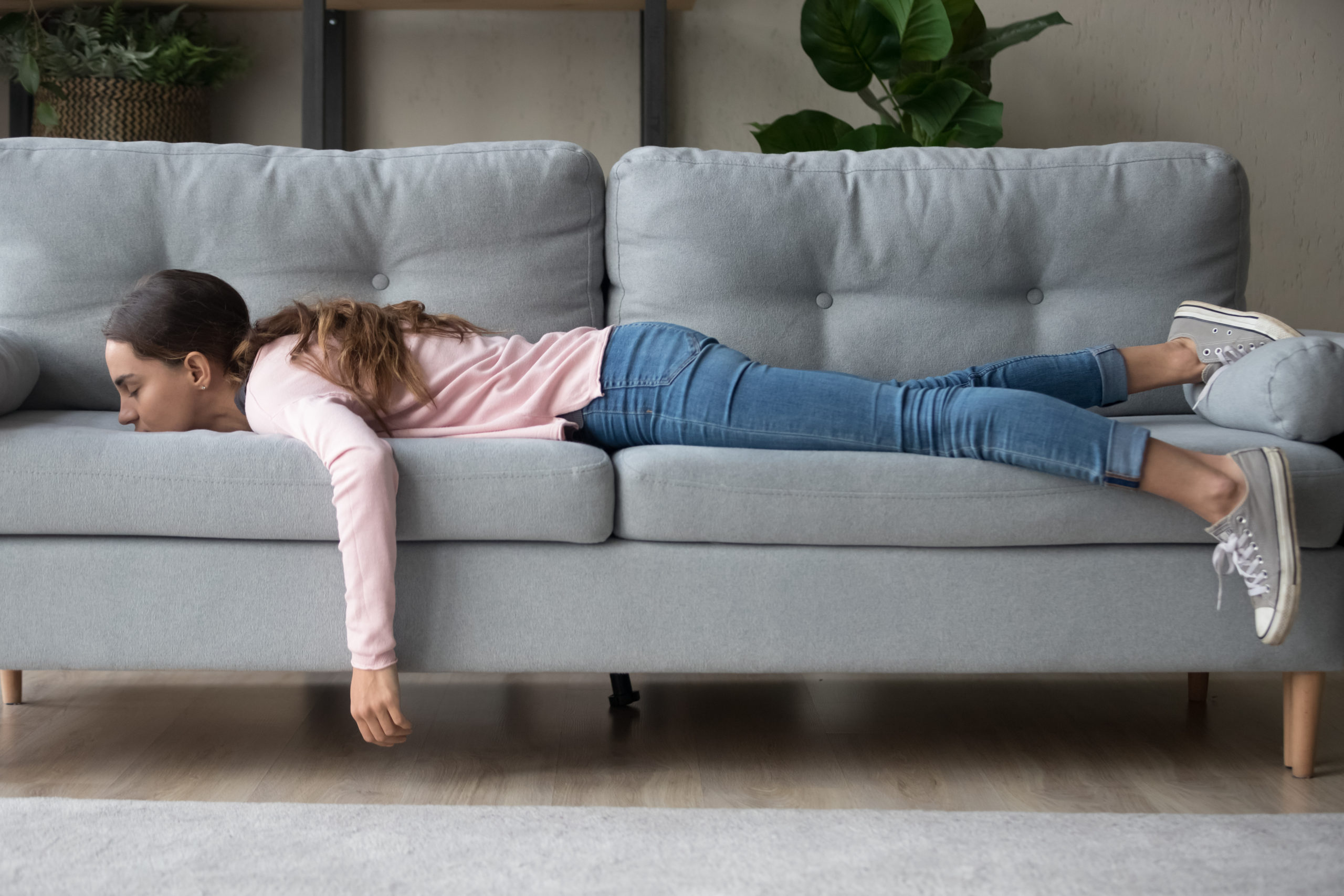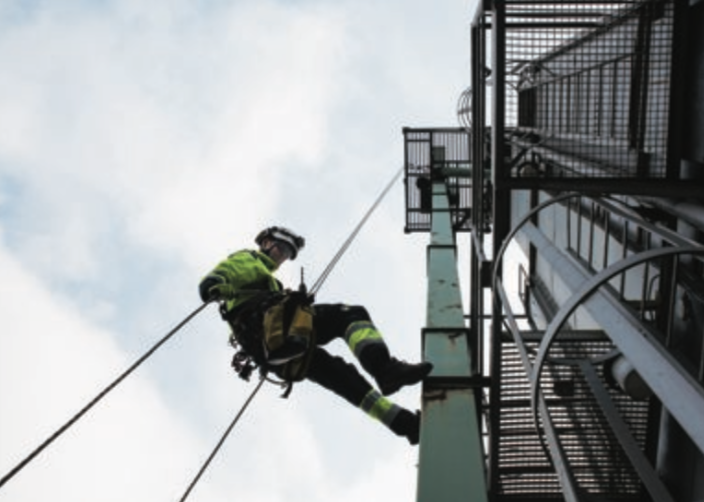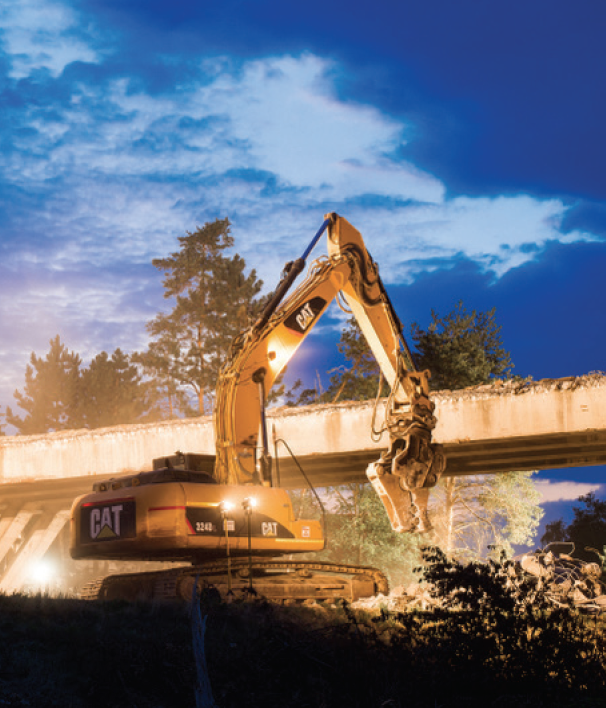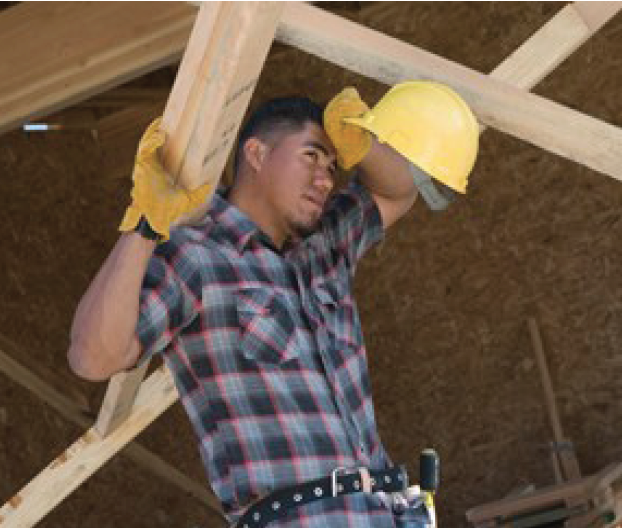CASE #255
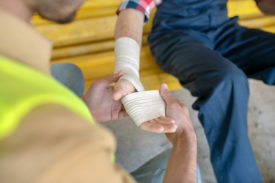
CASE #255 – Millwright injured when cabinet topples
- Modular cabinets allow the storage of several hundred pounds of parts or equipment in a safe, versatile and compact space, but storing that much weight in a space that small can create hazards.
- Modular storage cabinets must be anchored to the floor and wall in order to prevent them from tipping over. Opening only one drawer at a time also ensures the cabinet’s stability. After the incident, the cabinet was bolted down and a label was placed on the cabinet warning that only one drawer is to be opened at a time.
- Follow the manufacturer’s recommendations when installing modular storage systems. Parts, tools and other equipment should always be stored in the appropriate place and the storage areas should be kept clear of debris and other hazards.
L’armoire à pièces avait été déplacée d’un magasin à un autre et n’avait pas été boulonnée dans le nouveau magasin. Il contenait un poids combiné élevé de pièces stockées, donc avoir un certain nombre de tiroirs ouverts en même temps a déséquilibré la charge et a fait basculer l’armoire vers l’avant, renversant les tiroirs sur le sol.
- Les armoires modulaires permettent le rangement de plusieurs centaines de livres de pièces ou d’équipements dans un espace sécuritaire, polyvalent et compact, mais ranger autant de poids dans un espace aussi petit peut créer des dangers.
- Les armoires de rangement modulaires doivent être ancrées au sol et au mur afin d’éviter qu’elles ne basculent. L’ouverture d’un seul tiroir à la fois assure également la stabilité de l’armoire. Après l’incident, l’armoire a été verrouillée et une étiquette a été placée sur l’armoire avertissant qu’un seul tiroir doit être ouvert à la fois.
- Suivez les recommandations du fabricant lors de l’installation de systèmes de rangement modulaires. Les pièces, outils et autres équipements doivent toujours être rangés à l’endroit approprié et les zones de rangement doivent être exemptes de débris et d’autres dangers.
CASE #254
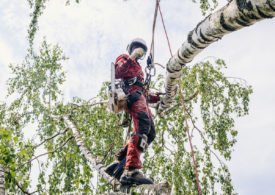
CASE #254 – Leg cut while wearing Kevlar safety inserts
The timber faller had relied on the use of these inserts for years and when he needed the protection, they failed.
- Many in the forest industry use safety inserts like these every day, but are they adequate? Better to prevent this type of serious injury from happening by using only tested and approved safety chaps while operating a chain saw and following the manufacturer’s specifications.
- Ensure that Kevlar safety inserts are secured so they can’t move around inside pants or chaps. For example, use them inside pants that are designed and manufactured to accommodate them.
- Follow the workplace safety requirements that apply to leg protection. It should be constructed with cut-resistant material, such as ballistic nylon. The leg protection must cover the full length of the thigh to the top of the boot on each leg to protect against contact with a moving chain saw.
L’abatteur de bois comptait sur l’utilisation de ces inserts depuis des années et lorsqu’il avait besoin de la protection, ça ne l’a pas protégé.
- De nombreuses personnes dans l’industrie forestière utilisent quotidiennement des encarts de sécurité comme ceux-ci, mais sont-ils adéquats? Mieux vaut prévenir ce type de blessure grave en utilisant uniquement des jambières de sécurité testées et approuvées lors de l’utilisation d’une scie à chaîne et en suivant les spécifications du fabricant.
- Assurez-vous que les inserts de sécurité en Kevlar sont fixés afin qu’ils ne puissent pas se déplacer à l’intérieur des pantalons ou des jambières. Par exemple, utilisez-les à l’intérieur d’un pantalon conçu et fabriqué pour les accueillir.
- Suivez les exigences de sécurité au travail qui s’appliquent à la protection des jambes. Il doit être construit avec un matériau résistant aux coupures, comme le nylon balistique. La protection des jambes doit couvrir toute la longueur de la cuisse jusqu’au haut de la botte sur chaque jambe pour éviter tout contact avec une scie à chaîne en mouvement.
CASE #253
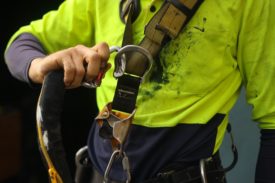
CASE #253 – Severed fall arrest lifelines prove fatal
- Anchor lifelines vertically overhead, whenever possible, to prevent the lifeline from contacting an edge and to minimize swing falls (or the pendulum effect) that can abrade and cut lifelines. In addition, make sure workers stay within a safe working distance from the overhead anchor point.
- When a fall could occur over an edge:
- Select and provide lifelines designed specifically for the application and follow the manufacturer’s instructions for use.
- Protect lifelines against being cut or abraded by covering the edge with a protective material.
- Address potentially hazardous edges and protective measures for lifelines in your fall protection work plan.
- Routinely inspect lifelines and other fall protection equipment before each use.
- Instruct crews on the use and limitations of the fall protection equipment provided, where potentially hazardous edges are located, and why they need to protect lifelines when working around exposed edges.
Les enquêtes sur chaque incident ont indiqué que les lignes de vie avaient été endommagées pendant la chute, pas avant. Dans les deux cas, les fabricants des cordes d’assurance ont mis en garde contre l’utilisation de SRL autour des bords qui pourraient endommager la corde d’assurance ou empêcher la SRL d’arrêter efficacement la chute.
Bien que les éléments ci-dessus impliquent des SLR, les non-SLR (par exemple, longe et corde, sangle ou câble) présentent un risque similaire.
- Ancrer les cordes d’assurance verticalement au-dessus de la tête, dans la mesure du possible, pour éviter qu’elles n’entrent en contact avec un bord et pour minimiser les chutes par balancement (ou l’effet de pendule) qui peuvent abraser et couper les cordes d’assurance. De plus, assurez-vous que les travailleurs restent à une distance de travail sécuritaire du point d’ancrage aérien.
- Inspectez chaque échelon à la fois à l’extérieur et côté intérieur du rail latéral pour tout signe de fissures ou de fissures dans la fibre de verre.
- Inspectez régulièrement les lignes de vie et autres équipements de protection contre les chutes avant chaque utilisation.
- Informez les équipes de l’utilisation et des limites de l’équipement de protection contre les chutes fourni, de l’emplacement des bords potentiellement dangereux et de la raison pour laquelle ils doivent protéger les lignes de vie lorsqu’ils travaillent autour des bords exposés.
CASE #252
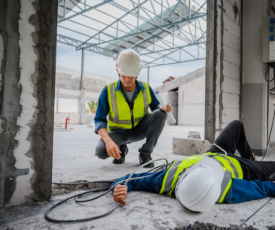
CASE #252 – School HVAC mechanic electrocuted
The incident occurred in the school’s all-purpose room as the victim and a co-worker were servicing two large HVAC units, one of which had been leaking water. Before starting work, they first tried to de-energize the units by shutting down the circuit breakers, a change from their usual procedure of turning off the power switches mounted on each unit.
They inspected the first unit, found that it was wet and needed cleaning, and re-energized the ventilator fan to allow it to dry. The second unit was also dirty, so they decided to vacuum it out with a small vacuum cleaner. Entering the unit from a ladder raised to an access panel, the victim started to vacuum the loose dirt when he contacted the exposed 480-volt heating coils in the rear of the duct. He was electrocuted by the energized coils, which were on a separate fused circuit and not connected to the circuit breaker panels.
- Ensure that machinery is fitted with adequate safeguards so workers cannot access hazardous points of operation. Do not modify, remove, or replace existing safeguards on machinery.
- Develop and enforce written safe work procedures for operating and working around feed mixers. These procedures should include when and how to check on the well-being of a worker assigned to work alone around such hazardous machinery.
- Follow the manufacturer’s safety instructions for operating machinery.
- Provide workers with adequate supervision and training. Employers should take immediate disciplinary action when workers fail to follow safe work procedures.
L’incident s’est produit dans la salle polyvalente de l’école alors que la victime et un collègue entretenaient deux grandes unités de CVC, dont l’une avait une fuite d’eau. Avant de commencer les travaux, ils ont d’abord essayé de mettre les unités hors tension en fermant les disjoncteurs, un changement par rapport à leur procédure habituelle d’éteindre les interrupteurs d’alimentation montés sur chaque unité.
Ils ont inspecté la première unité, ont constaté qu’elle était humide et qu’elle avait besoin d’être nettoyée, et ont remis sous tension le ventilateur du ventilateur pour lui permettre de sécher. La deuxième unité était également sale, alors ils ont décidé de l’aspirer avec un petit aspirateur. En entrant dans l’unité à partir d’une échelle surélevée jusqu’à un panneau d’accès, la victime a commencé à aspirer la saleté meuble lorsqu’elle est entrée en contact avec les serpentins de chauffage exposés de 480 volts à l’arrière du conduit. Il a été électrocuté par les bobines sous tension, qui se trouvaient sur un circuit séparé avec fusible et non connectées aux panneaux de disjoncteurs.
- Les employeurs et les employés doivent s’assurer que tous les circuits électriques sont hors tension et testés avant d’y travailler.
- Les employeurs devraient élaborer, mettre en œuvre et appliquer une procédure de verrouillage et d’étiquetage électrique.
- Les employeurs doivent connaître les ressources éducatives et de formation pour l’information sur la santé et la sécurité.
CASE #246
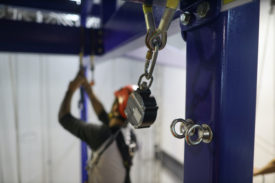
CASE #246 – Killed by unguarded driveshaft on overhead crane
- Safeguard all exposed shafts, couplings and other machine hazards, even if workers do not routinely work there.
- Ensure all machine safeguarding used/installed is user friendly (hinged and light weight for example) and secured in place.
- Develop Lockout/Tagout procedures and train workers on them.
- Where possible, use aerial lifts to perform job tasks and for access/egress of overhead cranes.
- Include machine guarding hazards in all crane inspection forms.
- Increase maintenance staffing to eliminate and control hazards identified by inspections. In the above accident the “crane inspector” position was eliminated by the employer and all crane inspections were being contracted out.
- Do not discontinue the use of PFAS just because other hazards are present. Instead, eliminate and control those hazards with guarding and other measures, work with PFAS vendors to choose the right PFAS. For example, systems that protect the lanyard when not in use.
- Protégez tous les arbres, accouplements et autres dangers de la machine exposés, même si les travailleurs n’y travaillent pas régulièrement.
- Assurez-vous que toutes les protections de machine utilisées/installées sont simples à utilisées (articulées et légères, par exemple) et sécurisées en place.
- Développez le verrouillage/l’étiquetage procédures et former les travailleurs sur celles-ci.
- Dans la mesure du possible, utiliser des nacelles élévatrices pour effectuer les tâches et pour accéder/sortir des ponts roulants.
- Inclure les risques liés à la protection des machines dans tous les formulaires d’inspection des ponts roulants.
- Augmenter le personnel de maintenance pour éliminer et contrôler les risques identifiés par les inspections. Dans l’accident ci-dessus, le poste d’« inspecteur de grue » a été éliminé par l’employeur et toutes les inspections de grue ont été sous-traitées. mesures, travaillez avec les fournisseurs de PFAS pour choisir le bon PFAS. Par exemple, des systèmes qui protègent la longe lorsqu’elle n’est pas utilisée.
Tired of the crisis? You are not alone
Right now there are probably many of us thinking; “I am so over this COVID thing”. Trouble is, COVID-19 is not done with us, and chances are won’t be for a long time to come.
But the sun is still shining, the lawn still needs to be mowed and summer holidays are just around the corner, right? Isn’t it time we all just…go outside? Sadly, not yet. As you can imagine, there is a term for what many of us are feeling. It’s called “Quarantine Fatigue”.
Contributing psychologists at verywellmind.com explain that when COVID-19 first appeared, we were focused on staying safe and alive. And now that we’re in the next phase of feeling like there is no end in sight, the focus may seem unclear resulting in a feeling of tiredness and lethargy. Here are some reasons behind Quarantine Fatigue:
Our fear is receding.
At the beginning of this crisis, people launched themselves head-first into panic mode, making giant changes to their lives with the idea of staying alive. But now the immediate terror and urgency of the moment are beginning to recede. The actual numbers and the real science are no less concerning, but because we have done some accommodating psychologically to the fear we stop feeling it as intensely say psychologists. This leaves us with is a growing sense of non-productivity, repetitiveness, loss of many things of our old life plus the loss of excitement and newness in our day.
We miss human connection.
We also miss and crave contact with other people, especially since we are social creatures. While a few weeks of separation may have felt tolerable or even a welcome change, the social urges and needs are intensifying and we’re craving more human connection.
Crisis mode is hard to maintain.
As people’s awareness heightened about the virus, we went into crisis mode, developing a sense of urgency, anxiety, and quick decision making. But now the dust has settled and reality sets in. We are tired of it; quarantine fatigue.
We all experience quarantine fatigue differently, but one thing’s for sure, having healthy ways to cope is important for our physical, emotional, mental, and spiritual health. For example, you could practice new forms of caring for yourself such as mindfulness meditation, yoga or journaling.
Be kind to yourself. If you are feeling overwhelmed or experiencing severe mood swings, talk to your doctor for
help and advice.
Fatigue could put you in danger
Research has shown that fatigue affects people in ways very similar to alcohol intoxication — they perform just as poorly when tired as they do when they are drunk.
Simply put, fatigue means exhaustion, tiredness or sluggishness. It results mostly from inadequate quantity or quality of sleep. Both are important for maintaining normal alertness and performance.
Fatigue is a workplace safety concern because it reduces attention and reaction time, which can cause someone to make errors in judgment, leading to mistakes that can result in injuries and property damage.
Sleep requirements can vary between individuals, but on average, we need at least 7.5 to 8.5 hours of sleep every day.
Inadequate sleep over a series of nights causes a sleep debt, which results in increased fatigue that can sometimes be worse than a single night of inadequate sleep.
There are many reasons for not obtaining the quality or quantity of sleep required to be rested adequately. Some of these reasons are work-related and some are not.
Examples of work-related fatigue factors are:
• Hours of work, especially night work, early morning starts and high total number of hours.
• Task demands or time pressures that do not allow for adequate breaks
during shifts.
• Working conditions that can
compound fatigue, such as heat stress and boring or repetitive tasks.
Examples of non-work-related fatigue factors include:
• Undiagnosed or untreated sleep disorders.
• Individual family or social factors that take priority over sleep.
A condition such as diabetes, allergies, hypertension, or a short-term illness such as a cold can cause someone to be fatigued more easily. Medication also could affect sleep or cause drowsiness.
Fatigue-related symptoms can be divided into three categories:
Physical — Yawning, heavy eyelids, rubbing the eyes, head drooping, microsleeps (brief periods of unconsciousness).
Mental — Difficulty concentrating and remembering, failing to communicate important information, failing to anticipate events or actions, accidentally doing the wrong thing or failing to do the right thing.
Emotional — Quieter or more withdrawn than normal, lacking in energy or motivation to do a task well, irritability.
The best way to prevent fatigue is to get enough quality sleep, which means making time for it during your time off and catching up on your sleep debt.
In addition, here are some temporary measures to help manage fatigue:
• Take a nap. Sleeping for 20 minutes might refresh you enough so you can keep working safely. If you’re driving, make sure you get off the road to a well-lit area and have good ventilation in your vehicle.
• Take a break. Stop what you’re doing, walk around or exercise and get some fresh air.
• Don’t be too comfortable, otherwise your alertness could decrease. Sit straight if you’re in a chair, and if possible, keep your environment cool, well ventilated, a bit noisy and brightly lit.
• Stay hydrated, eat light meals and avoid sleep-inducing foods and alcohol. Don’t trust caffeine for alertness — it takes about half an hour to have any effect, lasts only a short time and leaves you even more tired when it wears off.
• Break the monotony. If you’re driving, change the radio station often, sing along, or talk to yourself — but don’t use your cellphone.
Safe work at extreme heights
Falls from heights are among the leading causes of workplace injury and death. Laws vary by jurisdiction, but most require employers to have a written, site-specific fall protection plan when employees are working over a certain vertical height and are not protected by permanent guardrails.
There are heights — and there are extreme heights. Although it does not have a precise definition, that term is used often to describe work involving the construction and maintenance of such structures as:
• Communication towers and antennas.
• Wind turbines.
• Tall buildings.
• Bridges.
• Power transmission lines.
Any work at heights should be properly planned and supervised. First, a risk assessment will identify and address hazards related to the work to be performed. This information helps in selection of protective equipment for the job, as well as adequate control measures and precautions to ensure the safety of workers and others — the plan.
This plan should identify the fall hazards and fall protection systems required for each area, and the procedures for using, maintaining, fitting and inspecting protection equipment. It should also include procedures for rescuing a worker who has fallen and is suspended by a personal fall protection system or safety net.
People working at heights must be trained in practical fall prevention and
fall arrest techniques. They also must know how to properly select, fit, use, inspect, and maintain the gear they will be using.
Depending on the type of tall structure, there are various means by which workers get to where they will be working — cage-protected ladders, hoists and helicopters, for example. Each will require a degree of training to ensure safety.
Weather is a major consideration, for such conditions as:
High winds. Working in them tires a person faster, so accidents are more likely to happen and rescues or evacuations will be harder to execute. Communication becomes difficult as typically the only noise one can hear on a radio or phone is the whistling of the wind, and shouting isn’t a good option.
Extreme heat or cold. All workers should be trained to recognize the signs of heat exhaustion, heat stroke, hypothermia and frostbite, as well as how to prevent them. Note that metal surfaces exposed to direct sunlight might be hot enough to cause skin burns, and that dehydration, wind burn and even sunburn can occur rapidly in cold, dry weather.
Ice and Snow. Both make tall structures quite dangerous. Additionally, sections of ice could fall to the ground and be hazardous to people and property.
Moisture. Surfaces can become very slick with rain or dew, and for that reason, climbing a wet structure is highly discouraged.
Mud. Along with precipitation comes mud, which also make climbing dangerous and poses hazards on the ground such as stuck or difficult to maneuver machinery and unstable holes or trenches.
Lightning. Being in close proximity to metal components and electrical equipment poses particular concerns during thunderstorms or lightning events. Get off the structure if either occurs or is likely to.
Being near a tall structure, especially with climbers above, can be hazardous because of falling objects. Two or more persons working at different heights can also be risky. Be aware that dropped tools or equipment not only can go straight down, they could ricochet off a section of the structure and take a different path of descent.
Don’t take the darkness lightly
As daylight diminishes during the fall and winter months, decreased visibility can be very dangerous for workers in numerous occupations, particularly construction.
The end of daylight saving often leaves many of us feeling fatigued, and this can pose safety risks. Studies suggest it takes people who work traditional hours several days to fully adjust their sleep schedule after the time change.
The safety plan for a darkened worksite should include an analysis of potential hazards, such as blind spots, tripping or falling hazards and dangerous equipment.
To help prevent accidents in low-light or dark conditions, consider the following:
• As visibility decreases, adjust accordingly. Vehicle operators should reduce speed and workers should exercise extra caution.
• It’s not enough to wear bright colored clothing; you need approved high-visibility apparel.
• If the use of large machinery is required, several workers should be assigned as spotters to check all surrounding areas and warn other workers and/or machine operators.
• Workers and equipment should be separated as much as possible. The safest routes to walk or drive equipment should be clearly identified.
• Lighting helps increase visibility. If workers do not have enough visibility to work safely, they should not be performing their jobs. This applies not only to night shifts but early mornings as well.
• Bright lights on darkened worksites can create glare that inhibits visibility. They need to be positioned correctly to ensure the best visibility.
• All vehicles and machinery have blind spots, but when visibility is reduced they can be much larger.
Road work can be especially hazardous
in low-light conditions.
One reason road construction is done at night is to avoid traffic congestion and related problems encountered during daylight hours. However, it also carries the risk that motorists are less attentive and drive at higher speeds. In addition, more drivers impaired by alcohol or drugs are involved in work zone accidents at night.
Here are suggested practices
to help minimize risks:
• Use portable, changeable message signs to encourage speed compliance.
• Deploy what is termed positive protection, a portable concrete or plastic barrier or other device that minimizes vehicle damage but prevents intrusion into the work zone.
• Wear a hard hat and clothing that has retroreflective material visible from all sides and from a minimum distance of 300 meters (1,000 feet).
• Where positive protection is not available, use retroreflective material on all drums and cones and, where possible, use drums instead of cones. When using cones, stack two together or put weights on them to keep them in place. Make certain all signs and traffic channeling devices are maintained in place and in good condition.
• A full-time traffic control person should monitor the work zone several times a night and review all aspects of project visibility. The person also must make sure signage does not send confusing, mixed messages.
• Reduce the glare from work lighting. To avoid blinding motorists passing the work zone, position and align lights to keep them aimed toward the work area and not toward traffic. Glare is also a problem for motorist visibility and is caused by not extending light poles to the proper height or by not aiming the light downward to limit illumination to the work zone.
Overexertion injuries should be taken seriously
Overexertion in the workplace causes injury when a person works beyond his or her physical capacity. These types of injuries are usually caused by repetitive motion, such as typing, lifting heavy objects, or working in an awkward position.
Overexertion is generally
caused by:
• Lifting, pulling, pushing and carrying heavy items
• Repeated or long term bending or twisting at the waist.
• Reaching.
• Long term poor posture when sitting or standing.
• Long time absorbing vibration from machinery or driving.
However, physical overexertion is not just a workplace risk. Other causes of overexertion injuries include:
• Sports and exercise.
• Motion control video games.
• Hobbies like woodworking, building, and remodelling.
It is important to recognize if you or another worker is overexerting themselves. Some signs and symptoms of overexertion in the workplace include:
Losing your breath or failure to talk
A person who is overexerting themselves physically will generally be short of breath and unable to speak. While performing work-related tasks, such as lifting, workers should be sure they are not breathing to hard. Take a few moments to pause from the task and relax if you are having trouble breathing.
Feeling dehydrated
A worker who is overexerting themselves will usually feel dehydrated. Dizziness, dry mouth, fatigue, and muscle cramps are all signs of dehydration.
Fatigue and muscle/joint aches
Overexertion can lead to a variety of chronic injuries, including stress fractures and tendinitis. Soreness and aching in joints or muscles are precursors to most overexertion injuries and it’s important to discontinue the activity at least temporarily if you are noticing pain.
You can avoid overexertion injuries by:
Understanding your limits
Probably the most crucial factor for preventing overexertion injuries at work or home is knowing your own limits. When doing any job duty, the worker should pay attention to their own body and be aware if the task is leading to any muscle soreness, cramping, fatigue, or pain as these all indicate overexertion.
Using proper body mechanics
and good posture
Using proper technique in activities such as lifting is very important for protecting muscles, joints, and ligaments against overuse. Poor form and posture are common causes of injury, including overexertion of the neck or back.
Taking breaks
Workers performing physically strenuous tasks should be sure to take adequate breaks to prevent overexertion. The most effective breaks involve rest, stretching the muscles, and rehydrating to prevent fluid loss. Warning signs of exertion that may require immediate medical assistance include dizziness, rapid pulse and irregular heartbeat, chest pain, and profuse sweating.
Getting assistance for tasks that
are too difficult
When a work task calls for lifting, pushing, carrying, or pulling any heavy object, a worker should ask for help if they are unable to handle the load themselves. If another person is unable to assist, using equipment to help move the object is best.
If you think you have sustained an overexertion injury at work, it’s important that you report the injury to your supervisor, and visit your doctor for the best course of treatment.
